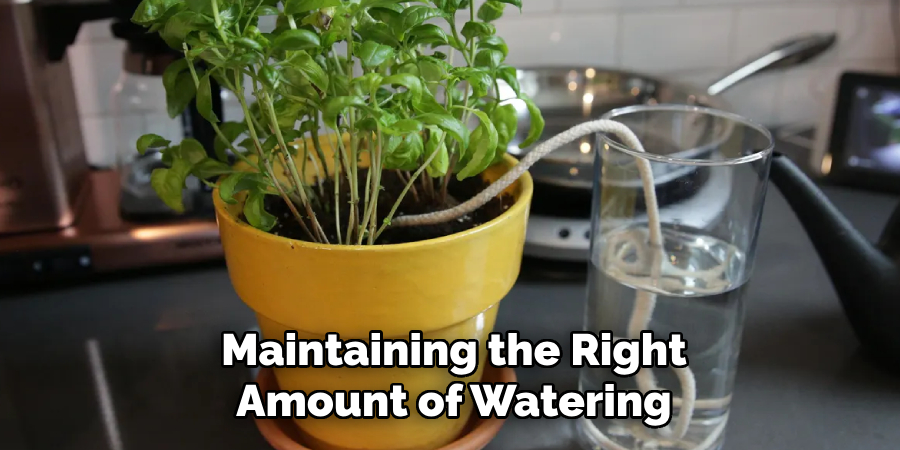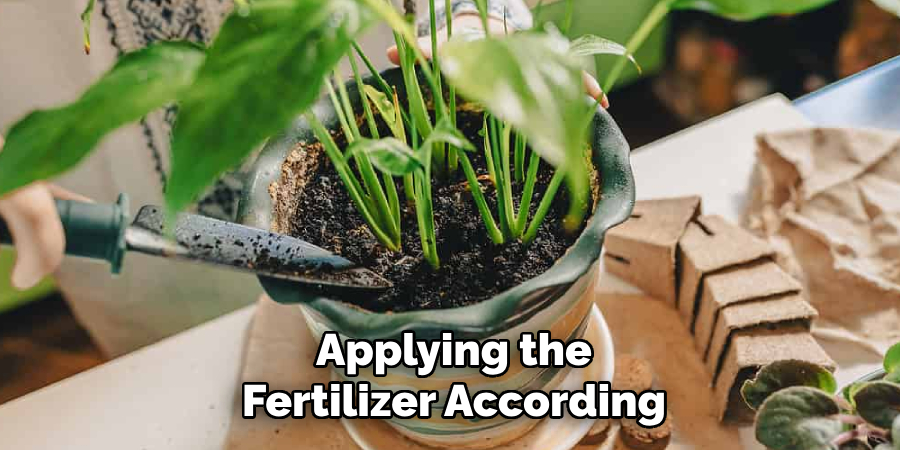To fertilize a peace lily, use a balanced liquid houseplant fertilizer diluted according to the package instructions. A peace lily can be a beautiful addition to any indoor space, with its dark green leaves and elegant white flowers.
However, in order to keep this tropical plant healthy and thriving, proper fertilization is essential. Fertilizing a peace lily is a relatively simple process, but it is important to follow some basic guidelines to ensure success. We will walk you through the steps of how to fertilize a peace lily effectively.
By understanding the right timing, frequency, and type of fertilizer to use, you can provide your peace lily with the necessary nutrients for optimal growth and vibrant blooms. So, let’s get started and make your peace lily flourish!

Credit: tenneyplants.com
How to Fertilize Peace Lily: Step by Step Guide
1: Understanding Peace Lily Fertilization
Understanding how to fertilize peace lilies is crucial for their overall health and well-being. Proper fertilization is essential in providing these plants with the necessary nutrients for optimal growth. The importance of fertilizing peace lilies cannot be overstated, as it helps maintain vibrant foliage and encourages the production of beautiful blooms.
However, before fertilizing these plants, there are certain factors that need to be considered. These include the type of fertilizer to be used, the frequency of fertilization, and the proper dilution ratio. It is also important to take into account the specific needs of peace lilies, such as their preference for a balanced fertilizer and the avoidance of over-fertilization.
By following these guidelines and taking these factors into consideration, you can ensure that your peace lilies thrive and flourish in their environment.
2: Choosing The Right Fertilizer For Peace Lilies
Choosing the right fertilizer for peace lilies involves understanding the difference between organic and synthetic options. Organic fertilizers are made from natural substances, while synthetic ones are chemically produced. It’s important to consider the npk ratio, which stands for nitrogen, phosphorus, and potassium.
This ratio indicates the proportion of these nutrients in the fertilizer. Finding the ideal npk ratio for peace lilies will depend on factors like the plant’s growth stage and the desired results. To achieve optimum growth, a balanced npk ratio, such as 10-10-10, is often recommended.
However, during the flowering stage, a higher phosphorus ratio, such as 5-10-10, can promote more blossoms. By selecting the right fertilizer and understanding the npk ratio, you can help your peace lilies thrive.
3: When And How Often To Fertilize Peace Lilies
Fertilizing peace lilies is essential for their healthy growth and vibrant foliage. To determine the right timing and frequency of fertilization, it’s important to recognize signs that your peace lily needs it. Keep an eye out for pale or yellowing leaves, fewer blooms, and slower growth as indicators of nutrient deficiency.
To establish a fertilizing schedule, consider factors like the plant’s age, size, and the type of fertilizer being used. Younger peace lilies may require more frequent fertilization, while mature ones may need it less often. Additionally, the overall health and environmental conditions, such as light exposure and temperature, can influence the frequency of fertilization.
By following these guidelines, you can ensure that your peace lilies receive the proper nourishment they need to thrive.
4: Fertilize Peace Lilies Effectively
Fertilizing peace lilies effectively requires careful preparation and application. Start by ensuring the plant is ready for fertilization. Apply the fertilizer correctly, following the recommended dosage and frequency. Avoid common mistakes like overfeeding or using the wrong type of fertilizer.
Remember to choose environmentally friendly options. Keep in mind these guidelines to ensure successful fertilization. By adhering to these instructions, you can promote the healthy growth and vibrant appearance of your peace lilies. Improve your gardening skills by learning the proper techniques and avoiding common pitfalls.
Help your peace lilies thrive and enhance the beauty of your indoor space with effective and well-executed fertilization practices.
5: Best Practices For Fertilizing Peace Lilies
In order to properly fertilize a peace lily, it is important to understand its unique needs. Maintaining the right amount of watering both before and after fertilization is crucial for its health. Providing the peace lily with optimal light conditions will promote enhanced growth.

6: Additional Tips For Successful Fertilization
Whether you have a small or large peace lily, adjusting fertilizer amounts is crucial. This ensures adequate nutrient supply for optimal growth. Monitoring the plant’s size and growth stage helps determine the appropriate fertilizer dosage. It’s important to address any nutrient deficiencies promptly.
Additionally, using controlled-release fertilizers can simplify maintenance tasks. These fertilizers gradually release nutrients over time, reducing the need for frequent applications. By following these tips, you can successfully fertilize your peace lily, promoting healthy foliage and vibrant blooms.
7: Troubleshooting Fertilization Issues With Peace Lilies
Over-fertilization in peace lilies can be identified by signs like leaf burn caused by improper fertilization. To address this issue, it is important to understand the symptoms of nutrient deficiencies. By observing the plant closely, you can determine whether it lacks essential nutrients.
In such cases, adjusting the fertilization routine can help alleviate the problem. Avoid starting any sentence with commonly overused words and phrases, and make sure to keep your writing concise and seo friendly. Remember to use a variety of phrases to maintain the reader’s interest.
Happy writing!
8: Restoring Health To Over-Fertilized Peace Lilies
Restoring health to over-fertilized peace lilies requires flushing out excessive nutrients from the soil. First, remove the plant from its pot and gently shake off the excess soil. Next, place the root ball under a slow flow of running water to wash away the remaining fertilizer.
Allow the plant to drain thoroughly before placing it back in its pot with fresh, well-draining soil. Water the peace lily only when the top inch of soil feels dry to avoid over-watering. Provide indirect sunlight and maintain a temperature between 65-85°f for optimal growth.
Additionally, regular misting can help increase humidity levels and relieve stress on the plant. By following these proper care techniques, you can revive stressed peace lilies and restore them to their vibrant and healthy state
9: Correcting Nutrient Deficiencies In Peace Lilies
Correcting nutrient deficiencies in peace lilies requires recognizing common deficiencies and providing targeted fertilization. By understanding the signs of nutrient imbalances, you can address specific needs in your plants. One common deficiency to look for is yellowing leaves, which may indicate a lack of magnesium or iron.
If you notice pale leaves, this could be a sign of nitrogen or potassium deficiency. To resolve these issues, consider using a balanced fertilizer or one specifically formulated for peace lilies. Applying the fertilizer according to the instructions and adjusting the dosage as needed will help restore the nutrient balance in your plants.

Remember to monitor your peace lilies for any changes and make adjustments accordingly. Keep in mind that maintaining overall health and wellbeing in your plants is crucial for their growth and beauty.
Frequently Asked Questions For How To Fertilize Peace Lily
How Often Should You Fertilize A Peace Lily?
Fertilize your peace lily every 4-6 weeks during the growing season (spring and summer) with a balanced, water-soluble fertilizer. Reduce frequency to once every 8-12 weeks in fall and winter. Be sure to dilute the fertilizer according to package instructions to avoid burning the plant’s roots.
What Type Of Fertilizer Is Best For Peace Lilies?
For peace lilies, use a balanced, water-soluble fertilizer with equal amounts of nitrogen, phosphorus, and potassium (such as a 20-20-20 fertilizer). This will provide the necessary nutrients for healthy growth and vibrant blooms. Avoid high-nitrogen fertilizers, as they can promote foliage growth at the expense of flowers.
Can You Use Compost To Fertilize Peace Lilies?
While compost can be beneficial for peace lilies, it should not be the sole source of fertilizer. Compost can be used as a top dressing to enrich the soil and improve moisture retention, but additional fertilizer is still necessary to provide the specific nutrients that peace lilies require.
Use compost in conjunction with a balanced water-soluble fertilizer for best results.
Should You Fertilize A Peace Lily Immediately After Repotting?
It’s best to wait at least 2-3 months before fertilizing a peace lily after repotting. This allows the plant to acclimate to its new surroundings and establish new roots. Fertilizing too soon after repotting can stress the plant and hinder root development.
Once the peace lily has fully settled in, resume regular fertilization as recommended.
Can Over-Fertilizing Harm A Peace Lily?
Yes, over-fertilizing can harm a peace lily. Excessive fertilizer can cause salt buildup in the soil, which can burn the plant’s roots and lead to root rot. Signs of over-fertilizing include brown leaf tips, stunted growth, and yellowing leaves. Always follow the recommended dosage and frequency for fertilizing peace lilies to prevent nutrient imbalances.
Conclusion
To sum up, fertilizing a peace lily is essential for its growth and overall health. By following the proper guidelines, you can ensure that your peace lily receives the necessary nutrients to thrive. Remember to choose a balanced fertilizer, dilute it correctly, and apply it in moderation.
Avoid overfertilizing, as this can lead to fertilizer burn and other detrimental effects. Regularly monitor your peace lily’s condition and adjust the fertilization schedule accordingly. Additionally, pay attention to the signs of nutrient deficiencies or excesses, such as yellowing leaves or stunted growth.
With proper fertilization, your peace lily will reward you with vibrant foliage and beautiful blooms. So, go ahead and give your peace lily the love it deserves by providing it with the right nutrients at the right time. Happy gardening!

